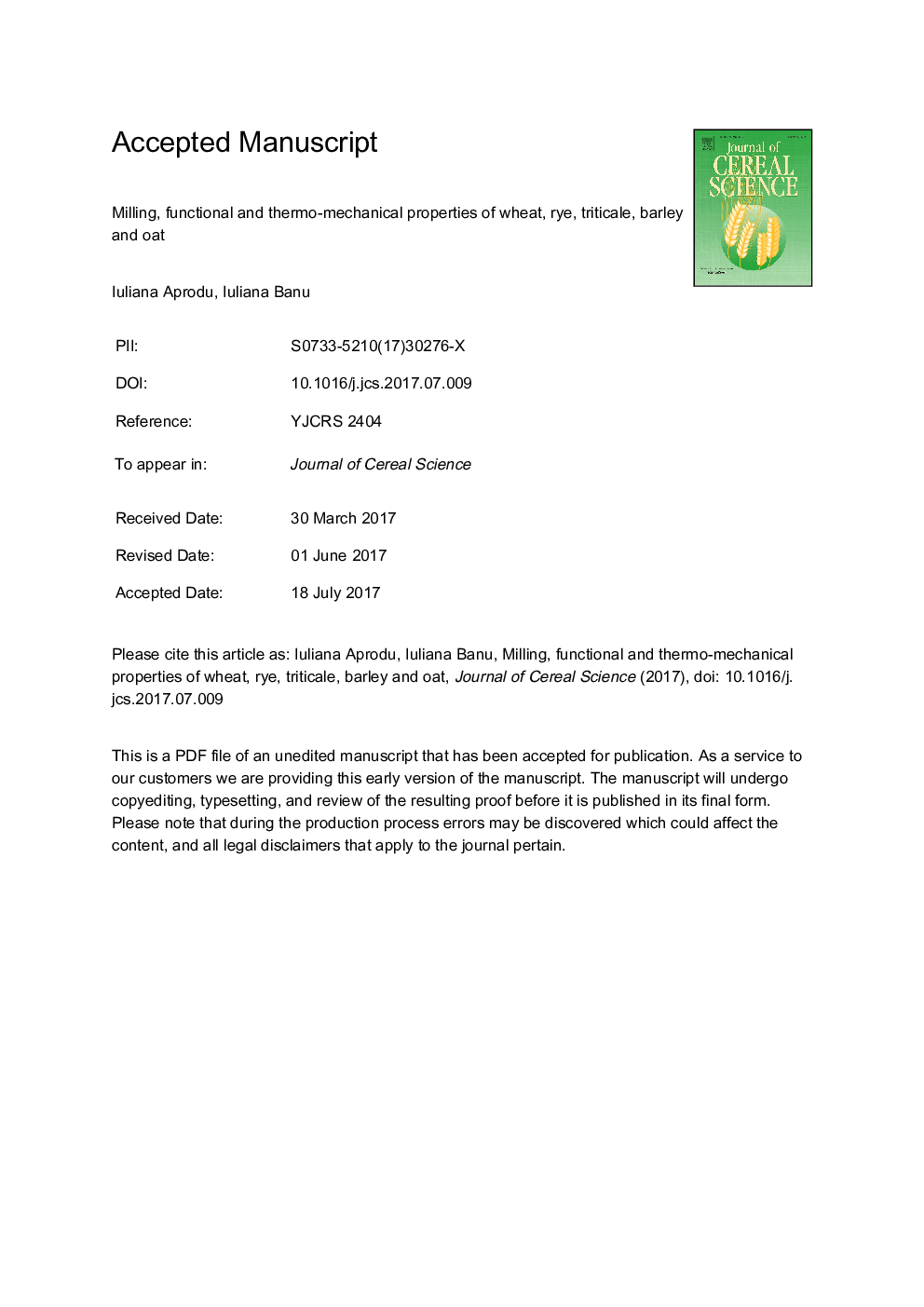| Article ID | Journal | Published Year | Pages | File Type |
|---|---|---|---|---|
| 5762400 | Journal of Cereal Science | 2017 | 30 Pages |
Abstract
The milling potential of hulled barley, hulled oat, triticale, rye and wheat was studied using a long tempering process and a laboratory four-roller mill. Regardless of the investigated cereal, the results indicated a significant influence (p < 0.05) of volume per surface area ratio on the milling yield and ash contents of the flour. The lowest milling yield was obtained in case of hulled oat. Solvent retention capacity profiles were determined for all investigated whole cereals and flours for predicting the contribution of different polymers to the functionality of samples. For all solvents higher values were obtained for the whole cereals compared to the corresponding flour. Thermo-mechanical properties of the whole cereals and refined flours were also investigated. If in case of wheat the gluten proteins play an essential role on dough behaviour during kneading at 30 °C, in case of triticale, rye, hulled barley and hulled oat, the fibers play a major role as well. Thermo-mechanical properties of starch registered a large variation between cereals and/or flours. The lowest torque value corresponding to starch gelatinization (C3) was registered in case of the hulled oat flour, 1.92 Nm, while the highest value in case of rye flour, 2.65 Nm.
Related Topics
Life Sciences
Agricultural and Biological Sciences
Agronomy and Crop Science
Authors
Iuliana Aprodu, Iuliana Banu,
